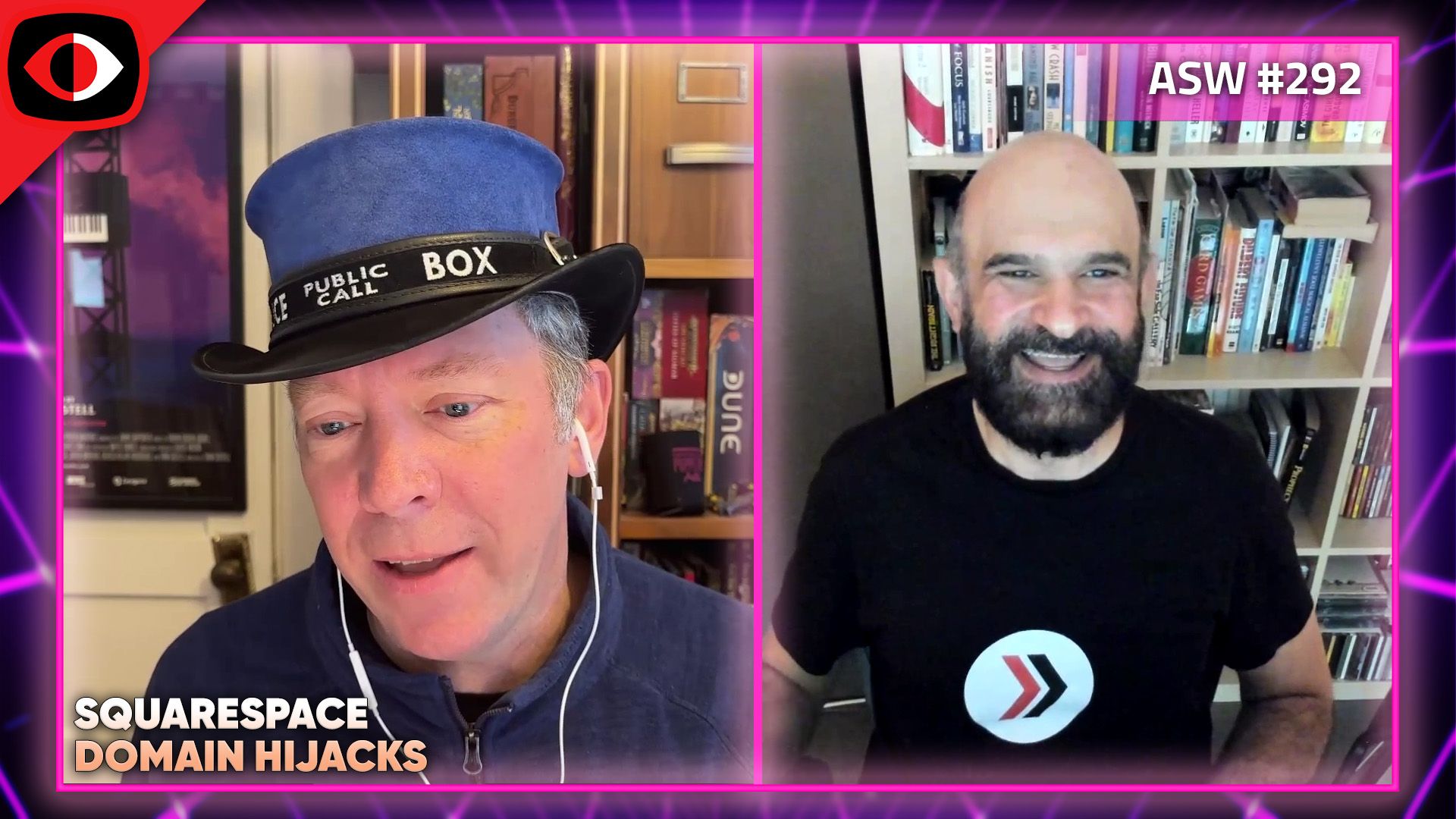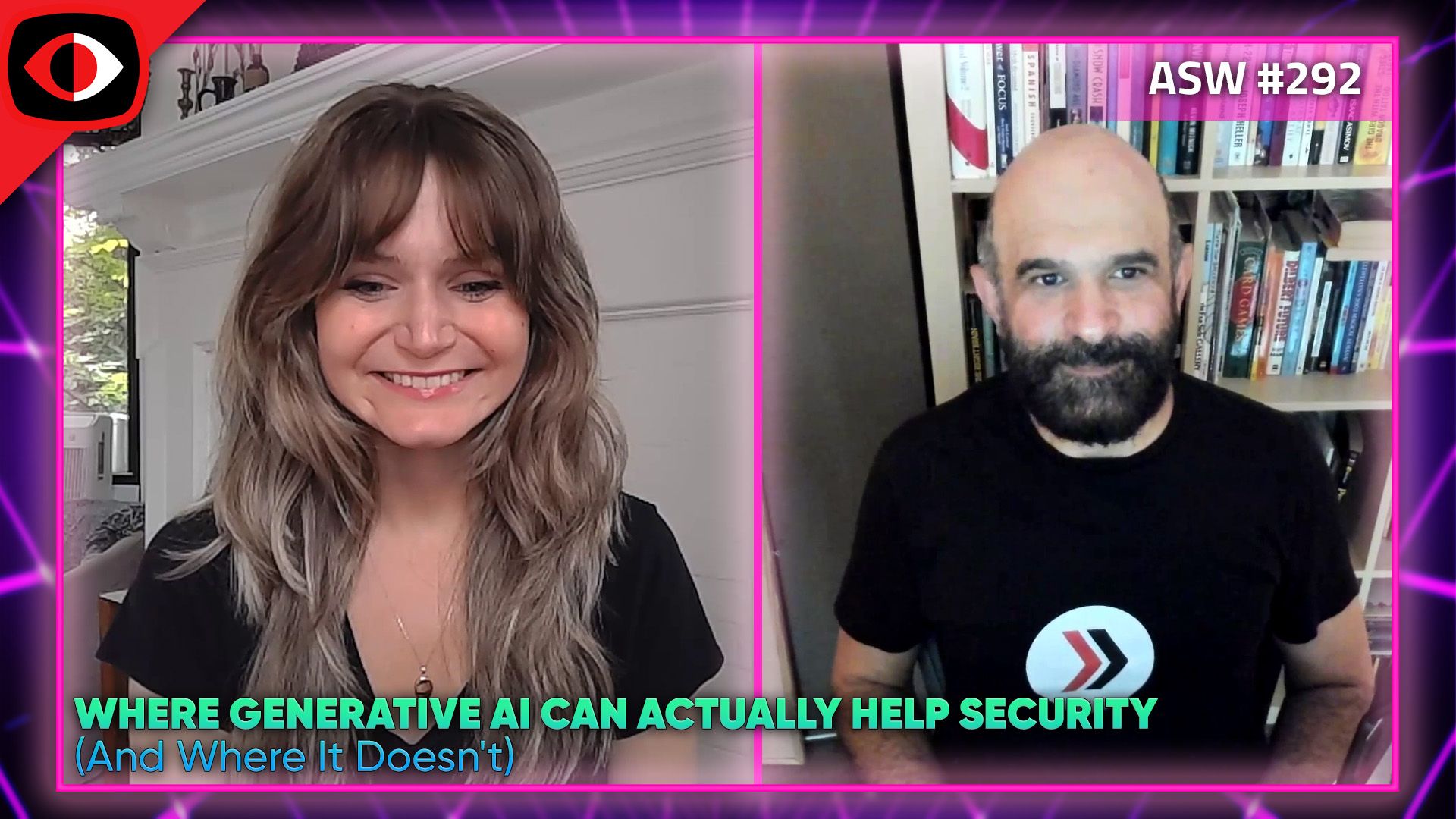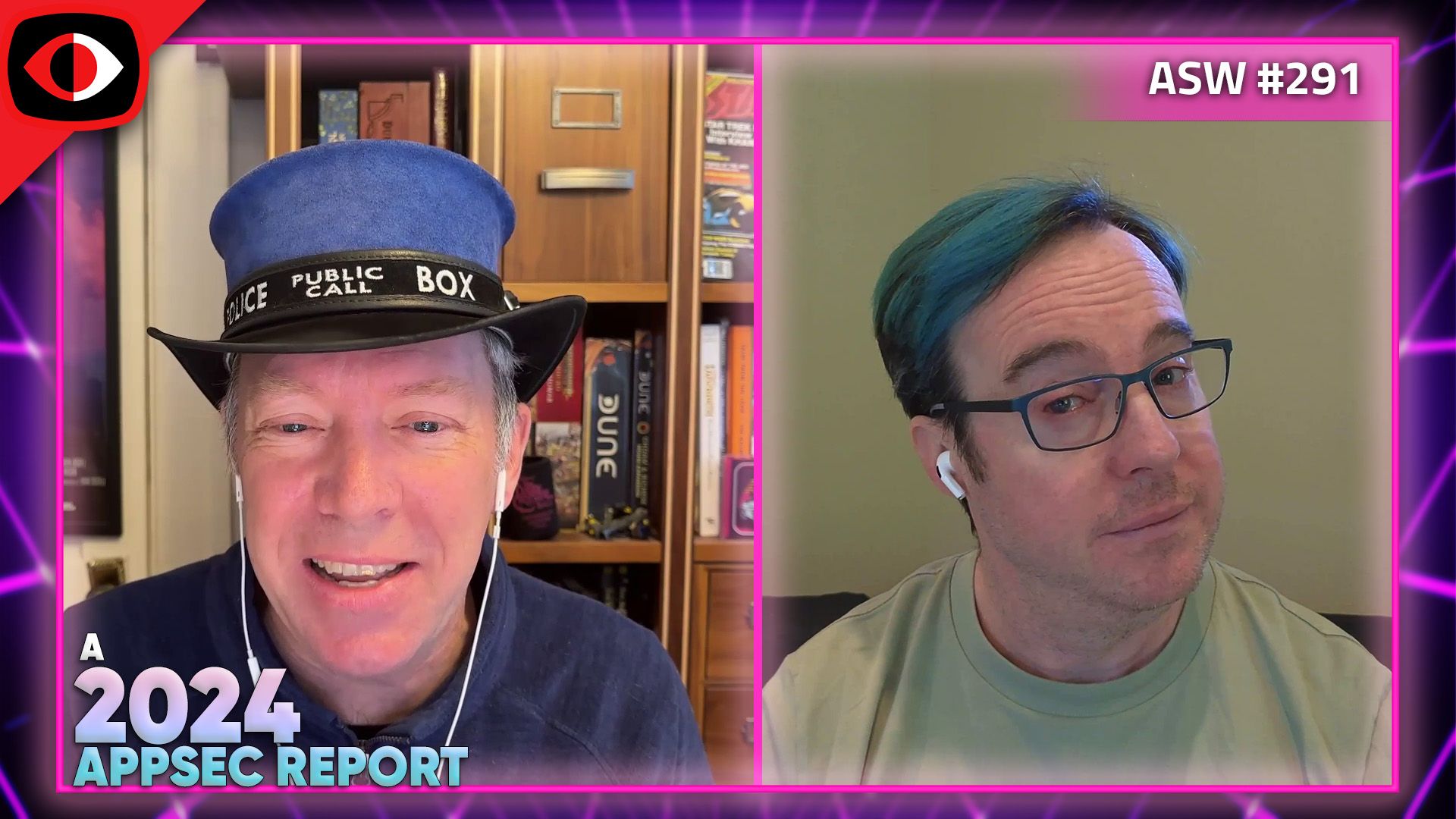ASW #191 – Eric Allard
Full Audio
View Show IndexSegments
1. Democratizing Software Security – Eric Allard – ASW #191
Making a positive impact to how we package software to make developer's lives easier in how they have to manage security.
Segment Resources:
- https://app.soos.io/demo
- https://soos.io/
-
This segment is sponsored by soos.io. Visit https://securityweekly.com/soos to learn more about them!
Announcements
Don't miss any of your favorite Security Weekly content! Visit https://securityweekly.com/subscribe to subscribe to any of our podcast feeds and have all new episodes downloaded right to your phone! You can also join our mailing list, Discord server, and follow us on social media & our streaming platforms!
Security Weekly listeners, save $100 on your RSA Conference 2022 Full Conference Pass! RSA Conference will be live in San Francisco June 6th-9th, 2022. Security Weekly will be there in full force, delivering real-time, live coverage and interviewing some of the event’s top speakers and sponsors. To register using our discount code, please visit https://securityweekly.com/rsac2022 and use the code 52UCYBER. We hope to see you there!
Guest

Eric Allard is on a mission to make software safer for everyone. As Chief Technology Officer at SOOS, Eric and his team are breaking down barriers and making it easy and affordable to identify and remediate software vulnerabilities early in the software development life-cycle. In a field crowded with convoluted pricing and cumbersome solutions, SOOS offers a straightforward pricing model and easy workflow integration.
Eric brings more than fifteen years of tech and entrepreneurial leadership to the SOOS team. Trained as a software engineer, he soon realized his true passion is anticipating customer needs and bringing solutions to market. He loves building and leading teams, and is known for both his big-picture strategic skills and his eye for detail. Eric’s previous roles include start-up founder, V.P. of Research and Development for MyWebGrocer, and stay-at-home dad.
Eric is Champlain College alumnus and a lifelong Vermonter. He is married and has two young children. In his freetime, he enjoys hiking, jack jumping, and photographing Vermont’s landscape.
Hosts
2. Escaping from BlastDoor’s Sandbox, Spring RCE, Old Zlib Flaw, Startup Security – ASW #191
FORCEDENTRY implications for the BlastDoor sandbox, Spring RCE, Zlib flaw resurfaces, security for startups, verifying Rust models, two HTML parsers lead to one flaw
Announcements
Don't forget to check out our library of on-demand webcasts & technical trainings at securityweekly.com/ondemand.
We're always looking for great guests for all of the Security Weekly shows! Submit your suggestions by visiting https://securityweekly.com/guests and completing the form!
Hosts
- 1. FORCEDENTRY: Sandbox EscapeThe biggest takeaway of this article is how attackers leveraged a series of logic bugs to avoid the security boundaries and controls created by Apple's "BlastDoor" sandbox for iMessage. This doesn't mean that sandbox and hardening was ineffective -- that design addressed many previous attack techniques. What it does show is that even sandboxes will fail against clever misuse of language capabilities. If you're really into iOS security, check out the deep dive on Objective-C linked to in the article: https://blog.chichou.me/2021/01/16/see-no-eval-runtime-code-execution-objc/ Check out our discussion of BlastDoor and links to additional resources from episode 166 at https://securityweekly.com/asw166/
- 2. Spring Framework RCE, Early AnnouncementIt's a Java flaw, but not a log4j level of Java flaw. For once, it seems that a default config seems secure. The whole Java ecosystem still has its challenges, though. One of the workarounds includes downgrading to Java 8, which seems like the most unfortunate path to have to go with if that's the only viable option for your application.
- 3. Zlib data compressor fixes 17-year-old security bug – patch, errrm, nowWe mentioned this briefly last week. Now the flaw has an official CVE -- from 2018! An interesting angle on this is the lifetime of a flaw, its discovery, and seeing processes fail such that a patch never makes it into the project. Maybe we should appreciate the impact that CVEs have on tracking and patching security issues.
- 4. On the Naturalness of Fuzzer-Generated CodeA deep dive into programs most useful to fuzzers for eliciting errors with their targets. It's not something you're likely to need in your day-to-day appsec program, but if you've been interested in fuzzers and strategies for producing test cases, this paper has some neat ideas, observations about the difference between human-generated programs (chaotic!) and machine-generated ones (predictable!?), and how that makes a difference to successful fuzzing runs.
- 5. Early Security for StartupsWe touch on this topic quite often -- where do you start with appsec and what should an early hire or investment focus on. Ransomware is good to mention, although I'd characterize it differently. A common outcome may be ransomware, but the attacks typically come from social engineering attacks that then take advantage of over-permissive access to production systems. So instead of focusing on a particular threat (ransomware), focus on deploying FIDO keys to 100% of your company and employing least-privilege access to production systems. That will make social engineering attacks significantly more difficult and minimize the ability of a malicious actor to execute ransomware on a system of consequence.
- 6. The Kani Rust VerifierPushing for memory-safe languages is a great way to address an entire class of flaws. But that doesn't mean a language or the application that uses such as language is secure -- there are plenty of other classes of flaws beyond buffer and heap overflows. It's cool to see Rust have another security analysis tool available for it (albeit one still in early days). The write-up explains what a model check is and why it's different from other approaches like fuzzing. Be sure to check out the comparison to other approaches for additional tools or techniques you may wish to adopt, or even just to understand what types of issues those other approaches are geared towards identifying: https://model-checking.github.io/kani/tool-comparison.html
- 7. HTML parser bug triggers Chromium XSS security flawHere's a subtle flaw that comes from a slight mismatch between two HTML parsers within Chromium. In one parser, an iframe's srcdoc attribute passes through an HTML sanitizer, where the other parser doesn't send srcdoc through the same parsing workflow. This leads to a flaw that looks like it could become a universal XSS, which is bad news for browsers. Read more discussion about the flaw in the Chromium issue tracker at https://bugs.chromium.org/p/chromium/issues/detail?id=1231037
- 8. PHP bug allows attackers to bypass domain filters, stage DoS attacks against serversWe don't cover PHP vulns too often. This one stems from PHP's underlying implementation - C. It's a classic signed/unsigned integer mismatch from a strlen() function whose input can be influenced by an attacker. It looks like the kind of flaw that code reviews, whether human or automated, should at least be suspicious of. It's also the type of flaw that requires a 2GB+ payload, which probably makes it much less conducive to unit tests, but probably still the type of situation of integer size boundaries for fuzzers to target.
- 1. Security’s lifecycle isn’t the developers lifecycle
- 2. How security complexity is being weaponized
- 3. 15 year old bug found in PHP’s PEAR
- 4. Zyxel(!) releases patches for firewallsThis looks very much like a vulnerability that was just patched in Sophos and Sonicwall devices... ????






